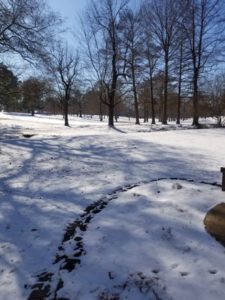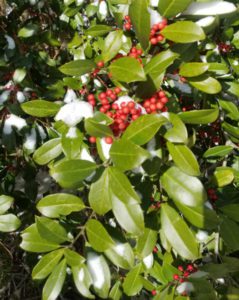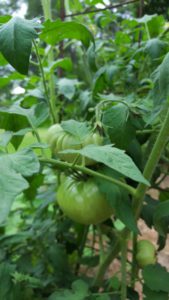 On a snowy day years ago, my grandfather told me that snow and ice were actually good for the soil. I wondered – could there be any science to back this up? I should have known from my elder, it really was true! Granddad grew up on a farm in Tennessee, and he knew from experience that his family’s large garden seemed to do better after snow had fertilized the ground during the previous winter.
On a snowy day years ago, my grandfather told me that snow and ice were actually good for the soil. I wondered – could there be any science to back this up? I should have known from my elder, it really was true! Granddad grew up on a farm in Tennessee, and he knew from experience that his family’s large garden seemed to do better after snow had fertilized the ground during the previous winter.
Frozen precipitation during the cold months has been called the “poor man’s fertilizer” for your grass and garden. Do lawn and garden experts believe that snow and ice are beneficial to soil for the coming growing season? In reading their advice, I learned there’s an upside and a downside.
The Positive:
Snow and ice leave nitrogen from our atmosphere on the soil, which fertilizes plants, making them greener later. One scientist wrote that not all of nitrogen from ice and snow is in a form usable by plants, but it helps a little. Rain and lightning actually ferry more nitrogen from the atmosphere down to the soil, but snow and ice stay on the ground and penetrate it longer.
Cold weather, with periods of wet and dry conditions, are part of the normal, seasonal cycle in most parts of our  country. Lawn care professionals say that most lawns recover nicely during the next growing season.
country. Lawn care professionals say that most lawns recover nicely during the next growing season.
Snow and ice can actually insulate the lawn from bitterly cold temps. The positive benefit, though, melts away when snow covers last for more than a week. One commercial nursery owner told me, when he hears that freezing temperatures are forecast, he waters all of his shrubs so that the frozen water, at about 32 degrees, will protect the plants from lower temps and dry air damage.
The cold weather and ice reduce the population of some garden pests. However, it can kill the beneficial bugs, too!
The Negative:
Snow and ice can damage grass blades. Sleds and all-terrain vehicles can tear up grass and leave rutted, bare spots on the lawn, which encourages weed growth in the spring.
Icy winds can dry out the plant and delay grass growth the next season.
 I live in the South, where we seldom have snow on the ground for more than 2 days at a time. However, in areas in which snow lingers for more than 2 weeks at a time, mold can form on grass that stays wet and has little direct sun while covered. The grass needs to “breathe” and needs sunshine, which snow cover blocks.
I live in the South, where we seldom have snow on the ground for more than 2 days at a time. However, in areas in which snow lingers for more than 2 weeks at a time, mold can form on grass that stays wet and has little direct sun while covered. The grass needs to “breathe” and needs sunshine, which snow cover blocks.
What we can do:
One lawn care company advised that grass clippings be removed from the lawn so they won’t clump and harbor mold during wet periods.
Clean up and remove any grass clipping and leaf piles from the yard before winter.
Store lawn equipment so that all grass is uncovered and can receive water and light.
Aerate the soil and grass before winter. There are tools for sale that do this! You can fasten and pull one of these behind a riding lawn mower to punch small holes in the lawn surface.
In areas where grass is already sparse, create a walkway through the snowy yard to avert foot traffic damage on plants. 
When using salt products to prevent or melt ice from walkways and driveways, remember that salt can be bad for nearby plants. When the ice melts, spray the areas with water to dilute the salt. The Farmer’s Almanac listed ways to melt ice without using salt, such as spreading urea and alfalfa meal on high-traffic areas.
https://www.farmersalmanac.com/home-garden/2010/02/15/how-to-melt-ice-naturally/


